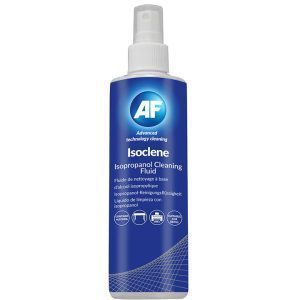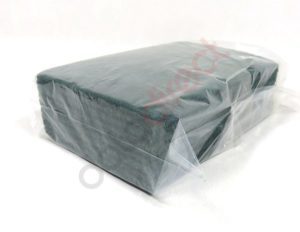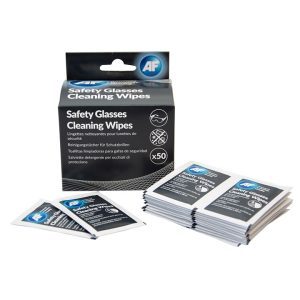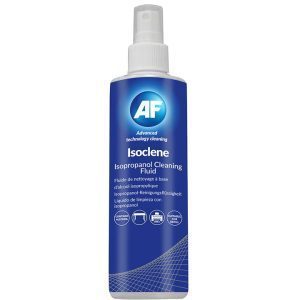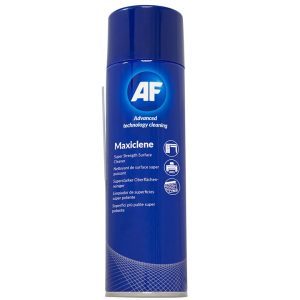Sign in to your account
Use your email for login
Create Account
Use your email for registration
PPE & Cleaning
Product categories
- Advent Ink Cartridges
- AeraMax Air Purifiers
- Air Quality
- Brother Cartridges
- Brother Ink Cartridges
- Brother Ink Toners
- Brother Ribbon Cartridges
- Brother Toner Cartridges
- Canon Cartridges
- Canon Ink Cartridges
- Canon Ink Toners
- Canon Toner Cartridges
- Card Reader
- Compatible Toner Cartridges
- Dell Ink Cartridges
- Dell Ink Toners
- Dell Toner Cartridges
- Develop Ink Toners
- Dymo Ribbon Cartridges
- Epson Cartridges
- Epson Ink Cartridges
- Epson Ink Toners
- Epson Ribbon Cartridges
- Epson Toner Cartridges
- Home Office
- HP Cartridges
- HP Ink Cartridges
- HP Ink Toners
- HP Toner Cartridges
- Ink Cartridges
- Ink Cartridges
- Ink Toners
- iSmart Business Solutions
- Kodak Ink Cartridges
- Konica Minolta Toner Cartridges
- Kyocera Ink Toners
- Kyocera Toner Cartridges
- Lexmark Cartridges
- Lexmark Ink Cartridges
- Lexmark Ink Toners
- Lexmark Toner Cartridges
- Minolta Ink Toners
- Neopost Cartridges
- Office Furniture
- Oki Ink Toners
- OKI Ribbons
- OKI Toner Cartridges
- OLIVETTI
- Olivetti Ink Toners
- Pantum
- Pantum Ink Toners
- Philips Ribbons
- Photocopier
- Pitney Bowes Ink Cartridges
- PPE & Cleaning
- Printer Cabinets
- PRINTERS
- Printers
- Ribbon Cartridges
- Ricoh Ink Cartridges
- Ricoh Ink Toners
- Ricoh Toner Cartridges
- Samsung Ink Toners
- Samsung Toner Cartridges
- Sharp Ink Toners
- Smart Misters Air Sanitiser Machine
- Text
- Text1
- Toner Cartridges
- Toner, Consumables & Parts
- Toshiba
- Toshiba Printers
- Utax
- Xerox Toner Cartridges
Showing 1–9 of 48 results
-
AF Isoclene – 250 ml Pump Spray Bottle Of Isopropanol Solution For Surfaces And Technical Maintenance Code ISO250Buy Now0 out of 5 (0 Review )£19.99 + Vat
-
AF Platenclene 1L Bottle For Cleaning Restoring Printer And Rubber Roller Heads.1L Solution. Code PCL01L.Buy Now0 out of 5 (0 Review )£24.99 + Vat
-
AF Safety Glasses Cleaning Wipes In A Box Of 50 Individual Impregnated Sachets With Euro Hook. Code SGCS050Buy Now0 out of 5 (0 Review )£12.14 + Vat
-
AF Isoclene 1L Bottle Of Isopropanol Solution For Surfaces And Technical Maintenance Code ISO01LBuy Now0 out of 5 (0 Review )£19.62 + Vat
-
AF Maxiclene – Super Strength Foaming Surface Cleaner. 400ml Aerosol. Code MXL400Buy Now0 out of 5 (0 Review )
£14.99£9.99 + Vat
What is PPE?
PPE is defined in the PPER 1992 as ‘all equipment (including clothing affording protection against the weather) which is intended to be worn or held by a person at work and which protects the person against one or more risks to that person’s health or safety, and any addition or accessory designed to meet that objective’.
Where an employer finds PPE to be necessary after a risk assessment, using the hierarchy of controls explained below, they have a duty to provide it free of charge.
Hierarchy of controls
PPE should be regarded as the last resort to protect against risks to health and safety. Engineering controls and safe systems of work should be considered first.
Consider controls in the following order, with elimination being the most effective and PPE being the least effective:
- Elimination– physically remove the hazard
- Substitution– replace the hazard
- Engineering controls– isolate people from the hazard
- Administrative controls– change the way people work
- PPE – protect the worker with personal protective equipment
Employers with both employees and limb (b) workers
From 6 April 2022, you need to ensure that there is no difference in the way PPE is provided to your workers, as defined by PPER 2022. This means assessing the risk and ensuring suitable PPE is provided, when needed, to all people that fall under the definition of worker.
The PPE provided must be compatible, maintained and correctly stored. All workers must use the PPE properly following training and instruction in its use from their employer. If the PPE you provide is lost or becomes defective, your worker should report that to you.
Employers with only limb (b) workers
You need to ensure that your workers are provided with PPE free of charge, where required, from 6 April 2022. This means assessing the residual risk once all other measures (such as engineering controls) have been taken.
You then need to ensure suitable PPE is:
- provided
- compatible
- maintained
- correctly stored
- used properly
You also need to provide training and instruction in its use to all your workers. You cannot charge workers for PPE they require to carry out their work.
How this legislation is enforced
HSE inspectors already include assessment of PPE as part of their routine inspections. Enforcement action can range from verbal or written advice to enforcement notices and, in the most serious cases, prosecution of dutyholders.
PPE not regulated and enforced under PPER 1992
Workers may be required to wear items of PPE under legislation other than PPER 1992. For example, crash helmets worn by workers on the road which is legally required under road traffic legislation.
The full list of circumstances where PPER 1992 do not apply is contained in regulation 3.
PPE that is required to reduce risks arising from the following is regulated and enforced under regulations other than the PPER 1992.
These risks include those from:
𝐇𝐨𝐰 𝐭𝐨 𝐈𝐦𝐩𝐫𝐨𝐯𝐞 𝐘𝐨𝐮𝐫 𝐈𝐧𝐝𝐨𝐨𝐫 𝐀𝐢𝐫 𝐐𝐮𝐚𝐥𝐢𝐭𝐲 𝐰𝐢𝐭𝐡 𝐀𝐞𝐫𝐚𝐌𝐚𝐱 𝐏𝐫𝐨𝐟𝐞𝐬𝐬𝐢𝐨𝐧𝐚𝐥 𝐈𝐕
Consider investing in the AeraMax Professional IV air purifier. It can remove up to 99.9% of airborne contaminants, including the flu virus, from rooms up to 130m2. This is ideal for places like conference rooms, classrooms, and cafeterias where people gather often.
AeraMax Professional IV uses PureView® technology and dual laser sensors to monitor air quality in real-time. You can easily track its performance and ensure that your facility users are breathing clean air. Plus, its EnviroSmart® technology adjusts fan speed based on occupancy and air quality, saving energy and improving air hygiene.
The average person inhales 11,000 litres of air every day, and indoor air can be up to five times more polluted than outdoors. Improve your indoor air quality with AeraMax Professional IV for a healthier and safer environment. Contact us today to learn more.
#cleanair #indoorairquality #flucontrol #workplacehealth #healthyenvironment
https://www.ismartbusinesssolutions.co.uk/product/aeramax-professional-am4-pc-pureview/

Looking for high-quality office furniture? Look no further than iSmart Business Solutions! Our range of office furniture is perfect for any modern workplace. Find the perfect pieces for your business today by visiting our website at www.ismartbusinesssolutions.co.uk/product-category/office-furniture/.
#modernworkplace #ismartbusinesssolutions #qualityfurniture #perfectpieces #workplaceessentials

Upgrade Your Desk, Upgrade Your Health with Fellowes Sit-Stand Workstations from ISmart Business Solutions. Choose the Corsivo for space or the Lotus for a compact design. Available in black, these workstations are the perfect investment for your health. Contact ISmart Business Solutions today for all your office furniture needs.
#fellowessitstandworkstations #ismartbusinesssolutions #corsivoforspace #lotusforcompactdesign #blackisthenewcool
https://www.ismartbusinesssolutions.co.uk/product-category/office-furniture/

𝐂𝐫𝐞𝐚𝐭𝐞 𝐭𝐡𝐞 𝐛𝐞𝐬𝐭 𝐞𝐬𝐩𝐨𝐫𝐭𝐬 𝐬𝐩𝐚𝐜𝐞 𝐟𝐨𝐫 𝐲𝐨𝐮𝐫 𝐬𝐜𝐡𝐨𝐨𝐥 𝐰𝐢𝐭𝐡 𝐢𝐒𝐦𝐚𝐫𝐭𝐁𝐮𝐬𝐢𝐧𝐞𝐬𝐬𝐒𝐨𝐥𝐮𝐭𝐢𝐨𝐧𝐬
Esports is a great way to teach students skills like teamwork, communication, and creativity. But you need a special space to support esports learning and gaming. That’s why you need iSmartBusinessSolutions. We can design and build customised esports desks, chairs, monitors, and more for your school. We have over 20 years of experience and we can work with your budget and space. Contact us today to find out how we can help you create the best esports space for your school. Visit our website at https://www.ismartbusinesssolutions.co.uk/our-brands/esports/ or call us at 02088708707
#gamingeducation #esportsdesk #customizedfurniture #schoolbudgetfriendly #ismartbusinesssolutions

Boost productivity with Toshiba's high-performance printers from iSmart Business Solutions. #Toshiba #iSmartBusinessSolutions #printers #businesssolutions

Looking for hassle-free printing? Choose Pantum! Our reliable printers are designed to be easy to use, without any unnecessary features. Join thousands of satisfied customers and experience the difference for yourself.
#pantumprinters #reliableprinters #easytouse #satisfiedcustomers #experiencethedifference
https://www.ismartbusinesssolutions.co.uk/product-category/printers/pantum/

Experience the ultimate in versatility with i-rise corporate! Perfect for Multipurpose meeting rooms, Training centres, and Open plan spaces, i-rise offers a flexible and expandable workspace with an innovative design and robust construction. Its efficient power management and invisible cable management make it a safe and secure solution for any workspace. Plus, the computer rises up and down for added functionality. Invest in i-rise today and elevate your workspace to the next level.
#innovative #versatile #multipurpose #meetingroom #trainingcenter
www.ismartbusinesssolutions.co.uk

Upgrade your workspace with i-rise corporate for innovation, functionality, and safety. Flexible and expandable design, efficient power management, and secure IT storage. Invest in i-rise today for a sleek workspace that promotes productivity. #iRise #workspace #innovation #efficiency #safety
https://www.ismartbusinesssolutions.co.uk/our-brands/i-rise-education/

SmartMister offers solutions to prevent and control indoor infections in workplaces, schools, and care homes. Our products are safe, environmentally friendly, and effective against bacteria. Choose SmartMister for a safe and healthy indoor environment. #indoorinfectionsprevention #workplacesafety #schoolsafety #carehomesafety #safeproducts
https://www.ismartbusinesssolutions.co.uk/product/safesuite-smartmister-wi-fi-air-purifier/

Upgrade your office's printing game with Pantum, vailable at iSmart Business Solutions!
#officeprinting #pantum #ismartbusinesssolutions #upgrade #printer

Keep Up To Date With
all off our latest offers when you sign up to our newsletter.
Categories

Copyright © 2022 I Smart Business Solutions All Right Reserved.

